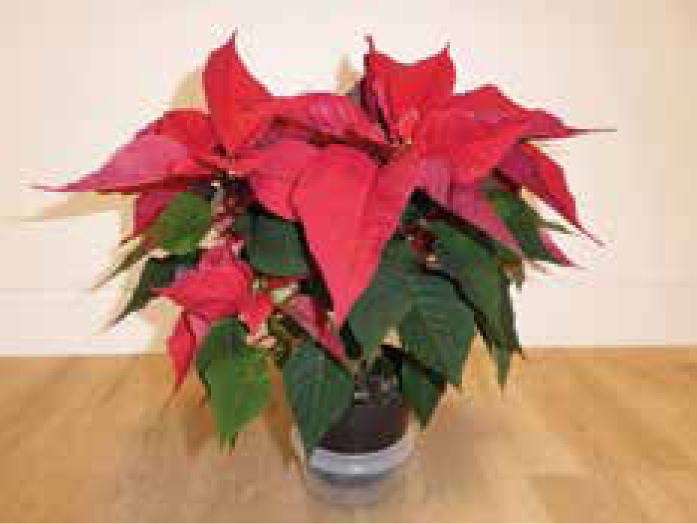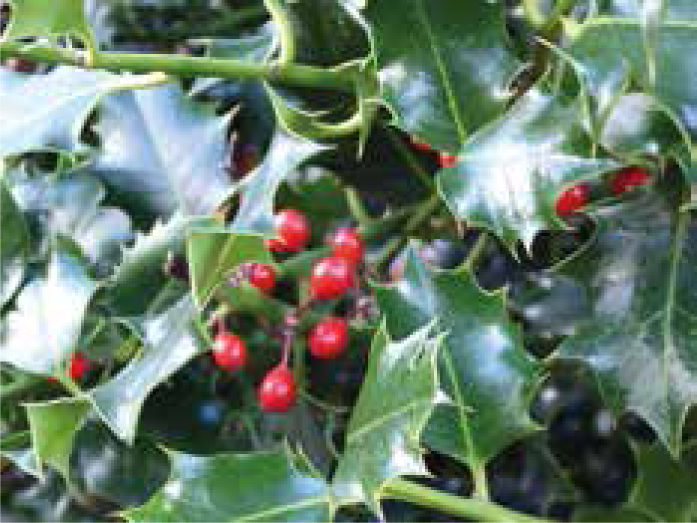Top of the list of Christmas hazards is chocolate and cases of poisoning are very common at this time of year. There can be several kilograms of it readily accessible around the Christmas tree and a layer of wrapping paper will not pose a barrier to an inquisitive dog who will easily eat all it can find. Although cases are common, deaths from ingestion of chocolate are rare.
Baked foods containing dried fruits (sultanas, raisins and currants) including Christmas cake, Christmas pudding, stollen and mince pies are also much in evidence. These fruits (and grapes) can cause renal failure in pets and prognosis is poor in animals that present in renal failure. On the upside, dried or fresh cranberries are not toxic to pets. Delayed presentation may be more of a risk over the Christmas and New Year season because of the prolonged holiday period, particularly where funds may be limited.
Nuts are more commonly found in home at this time of year. Macadamia nuts are the main concern as they cause weakness, ataxia, stiffness and joint pain in dogs. The cause is unknown but full recovery is expected. Other nuts such as pistachios, Brazil nuts, walnuts and sweet almonds can cause gastrointestinal signs and ingestion of a large quantity of nuts could result in gastrointestinal obstruction. Chocolate-covered macadamia nuts and raisins will be a double toxic hazard to pets.
Foods containing onions, leeks or garlic such as sage and onion stuffing or onion gravy are a potential risk to pets, particularly if given repeatedly, since they can cause Heinz body anaemia.
Glasses of alcohol may be left unattended during the festivities and may be investigated by pets. From the experience of the Veterinary Poisons Information Service (VPIS), Irish cream appears to be particularly attractive to dogs but they will also drink other spirits and wine. Signs of alcoholic intoxication are the same in pets as in their owners.
The home may be decorated with Christmas plants such as ivy, holly, mistletoe, Christmas cherry and poinsettia and of course the Christmas tree. In the majority of cases these cause only gastrointestinal signs and severe poisoning is unlikely. Poinsettia is commonly believed to be a toxic plant but fortunately this is not the case.
Detergent cleaners are irritant to the skin and can cause pneumonia if aspirated, particularly if vomiting occurs. Benzalkonium chloride is a common ingredient in disinfectants and causes pyrexia, hypersalivation and oral ulceration in cats. They commonly present hours after exposure and may take several days to recover.
Lastly left over food which has gone mouldy is also hazardous since the mould can produce toxic substances (tremorgenic mycotoxins) which cause rapid onset tremors and seizures. Bin raiders are at particular risk.
Prevention is key. This is a season of celebration and owners do not need the worry and cost of ill pets that may be hospitalised and absent during the festivities. Informing and educating owners on the risks of poisoning over the Christmas period with information displays, practice literature (material is available at www.vpisglobal.com) and social media should help. It is also useful to provide owners with practical advice on what to do in an emergency and where to seek help including out of hours contact details for your practice and other resources such as Animal PoisonLine (www.animalpoisonline.co.uk).





